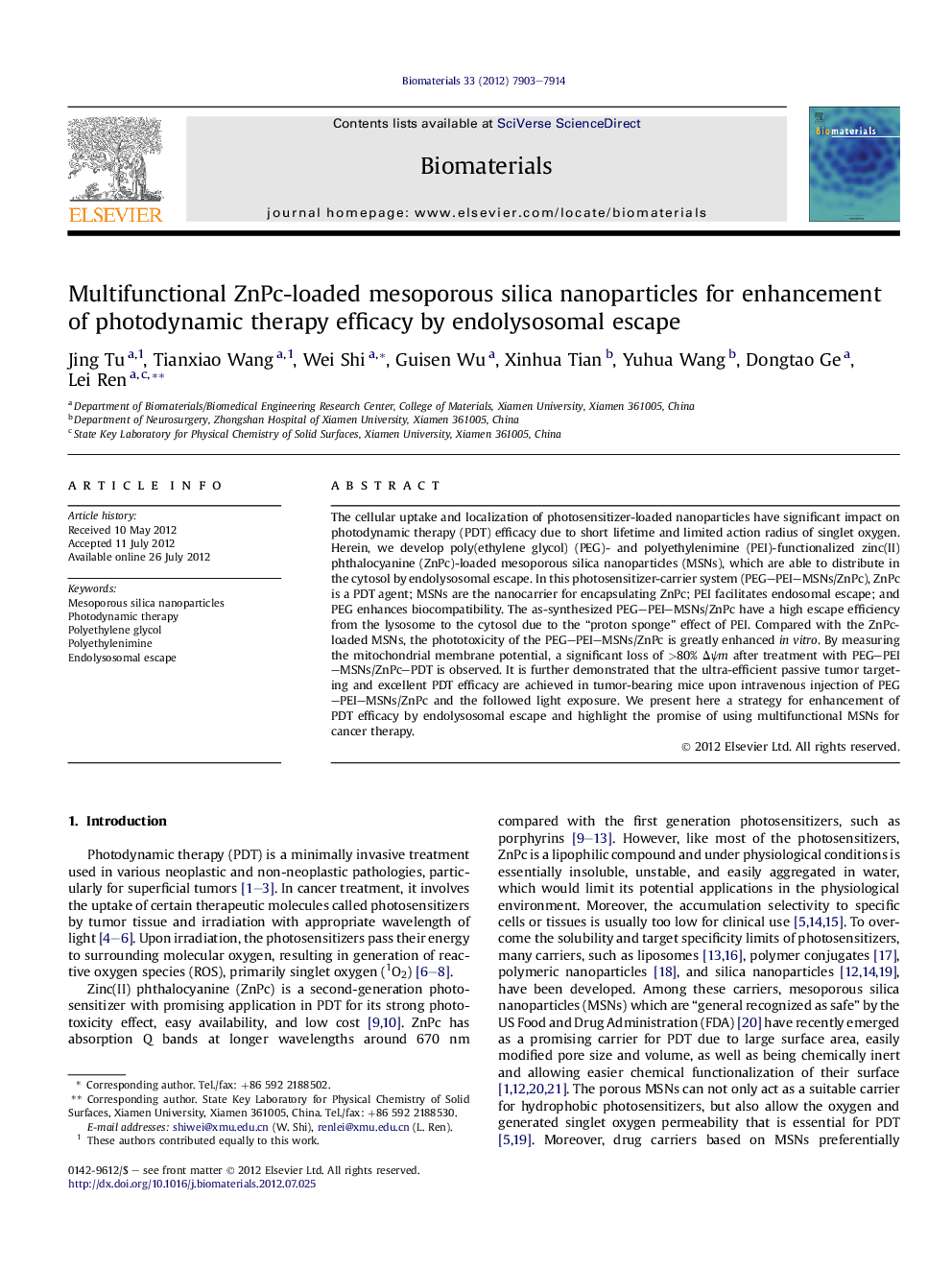| Article ID | Journal | Published Year | Pages | File Type |
|---|---|---|---|---|
| 6508 | Biomaterials | 2012 | 12 Pages |
The cellular uptake and localization of photosensitizer-loaded nanoparticles have significant impact on photodynamic therapy (PDT) efficacy due to short lifetime and limited action radius of singlet oxygen. Herein, we develop poly(ethylene glycol) (PEG)- and polyethylenimine (PEI)-functionalized zinc(II) phthalocyanine (ZnPc)-loaded mesoporous silica nanoparticles (MSNs), which are able to distribute in the cytosol by endolysosomal escape. In this photosensitizer-carrier system (PEG–PEI–MSNs/ZnPc), ZnPc is a PDT agent; MSNs are the nanocarrier for encapsulating ZnPc; PEI facilitates endosomal escape; and PEG enhances biocompatibility. The as-synthesized PEG–PEI–MSNs/ZnPc have a high escape efficiency from the lysosome to the cytosol due to the “proton sponge” effect of PEI. Compared with the ZnPc-loaded MSNs, the phototoxicity of the PEG–PEI–MSNs/ZnPc is greatly enhanced in vitro. By measuring the mitochondrial membrane potential, a significant loss of >80% Δψm after treatment with PEG–PEI–MSNs/ZnPc–PDT is observed. It is further demonstrated that the ultra-efficient passive tumor targeting and excellent PDT efficacy are achieved in tumor-bearing mice upon intravenous injection of PEG–PEI–MSNs/ZnPc and the followed light exposure. We present here a strategy for enhancement of PDT efficacy by endolysosomal escape and highlight the promise of using multifunctional MSNs for cancer therapy.
